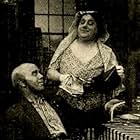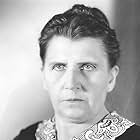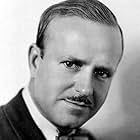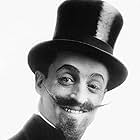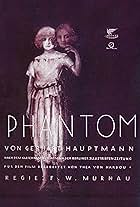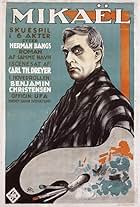IMDb RATING
6.7/10
2.4K
YOUR RATING
A young woman marries an older millionaire and then falls in love with a handsome nobleman on her honeymoon.A young woman marries an older millionaire and then falls in love with a handsome nobleman on her honeymoon.A young woman marries an older millionaire and then falls in love with a handsome nobleman on her honeymoon.
Frank Butler
- Lord Wensleydon
- (as F. R. Butler)
Gino Corrado
- Guest at Alpine Inn
- (uncredited)
Mary Foy
- Clementine - Theodora's Older Sister #1
- (uncredited)
Lucien Littlefield
- Sir Lionel Grey's Associate
- (uncredited)
Larry Steers
- Guest at Beachleigh
- (uncredited)
Adele Watson
- Sarah - Theodora's Older Sister #2
- (uncredited)
Leo White
- Pageant Director
- (uncredited)
- Director
- Writers
- All cast & crew
- Production, box office & more at IMDbPro
Storyline
Did you know
- TriviaLost for many decades since its original release, a copy of this film was discovered in April 2003 in Haarlem (The Netherlands) in a private collection. It was restored by the Nederlands Film Museum and the Hagheflim Conservation and was screened in 2005, complete with English dialogue screens in place of the original Dutch, at the Cannes film festival. It made its television debut on May 21, 2006, on Turner Classic Movies as part of a nine-film tribute to Rudolph Valentino.
- GoofsWhen Husein Ben Ali and his men are being chased away by the soldiers, a crew member steps in front of the camera during the wide shot of the scene.
- Quotes
[last lines]
Lord Hector Bracondale: Darling, we have passed the rocks and here are the safe waters beyond.
- Alternate versionsIn 2005, The Nederlands Filmmuseum copyrighted a restored version of this film with new intertitles (based on the original continuity script) and a new musical score by Henny Vrienten. It ran 80 minutes. which included about 2 minutes of explanatory remarks and restoration credits, was distributed by Milestone and broadcast on the Turner Classic Movies channel in 2006. The IMDb credits are taken from this version, but they probably differ from the original credits. In 1922, Valentino's screen given name was Rodolph and spelled that way in reviews. Cast lists were not common; credited actors were in the intertitles right before they appeared onscreen. If that were the case for this movie, Helen Dunbar, 'Raymond Brathwayt' and Frank Butler would be marked uncredited, since their names and their character names do not appear in the intertitles.
- ConnectionsFeatured in 7 Classic Movie Tricks That Led to Modern CGI (2021)
Featured review
I had a full range of impressions and emotions while watching this recently rediscovered silent film. I saw it on a big screen in Orlando (before DVD release) and my husband and I sat in the very front row so we would be right on top of it and wouldn't miss a thing.
Story aspects: Beyond the Rocks is a romantic melodrama, based on a story by Elinor Glyn. It had some typical silent film clichés and overacting, but to a veteran silent film fan this will not be distracting. Gloria Swanson plays Theodora, who loves her father and family enough to sacrifice for them by marrying an older man she does not love just because he is rich. Afterward she falls in love with Hector (Rudolph Valentino), a rich romantic young gentleman who rescues her from the clutches of death not just once, but twice. A series of circumstances leads the husband to understand his wife is in love with another man, and he goes off on a dangerous exhibition to Algeria with the aim of sacrificing himself so that the young couple can be together.
Swanson and Valentino obviously enjoyed working together, they had a nice chemistry together on screen, though it didn't strike me as a terribly passionate one. In fact there was not one single kiss scene in the entire film, a major disappointment to me (unless there was one in missing footage). The closest they come to it is one scene where she rubs her cheek against his head. There was instead much talk of duty and doing the right thing by staying away from each other as much as possible, so that the husband would not be hurt.
Style aspects: Gloria's clothes in the film were gorgeous. Valentino on the other hand looked like he was shortchanged in the wardrobe department in several scenes, where he wears a tweed suit that ill becomes him. It looks too tight and only one top button is buttoned on his suit coat, which looked odd to me. For one brief scene he looks incredibly dashing all dressed in white. This was also the first time I noticed that Valentino had a rather large horizontal scar on his right cheek! You can see details like this much better on a big screen. I have never noticed it in any Valentino film I've seen on DVD. In the beginning scenes Valentino looks so young he looks like a teenager. Delectable. Gloria on the other hand had so much makeup on that she looked much older than her years, older even than she looked in Queen Kelly! That kept putting me off. It got a little better when she started wearing sophisticated, glamorous clothes, when she did age as part of the plot.
The art direction was pretty good for a 1922 movie. The scenes on the water and in the desert were quite realistic. The interior of homes looked authentic to the time period. Obviously a great deal of thought was dedicated to the overall look of the film, to make it artistic as much as possible.
Technical aspects: The film started at 7 pm and ended at 8:15 pm, so it was roughly one hour and 10 minutes long (with a 5 minute intro). My first impression of the film was that I was disappointed the beginning titles and credits were obviously lost. The font they used for the title and star credits was a modern, simple one and not impressive. If I were restoring it I would have designed opening credits with a strong vintage look to them, perhaps using a decorative flower design border. They could have gotten ideas from similar 1922 films. To just announce their magical names, Gloria Swanson and Rudolph Valentino, with a boring, ugly modern font was not appropriate and didn't do justice to the importance of this film find.
Most scenes had artifacts galore and missing frames. A pageant sequence was partly missing, leaving the audience with unanswered questions as to what went on during those important scenes. There were some deteriorated scenes and decomposition but most of the film was in watchable condition, and we should be thankful we have it at all.
Musical aspects: The score was a strange mixed bag of new age music with some jazzy refrains thrown in at inappropriate times. One flashback scene received some vintage sounding music but it wasn't impressively authentic. There was one nice bit of music in a hotel scene where a musician was playing some kind of elaborate string instrument and people were dancing. That was my favorite part of the score, but alas, all too brief. Overall I feel the composer was trying to sound like James Horner's music, the fellow who did James Cameron's Titanic soundtrack, but this new age, Celtic sound is just not what I prefer when I watch my silent films. Enough with the pan flutes already! I prefer period music for silents.
The absolute worst thing about this score was the constant sound effects. It was ridiculous. No audience would have heard that many sound effects when going to watch a silent film in 1922. They wouldn't have heard that many sound effects if they had seen a silent-part sound film in 1929!
My rating: I'd give this film a 7 out of 10 for the storyline itself, a typical melodrama that wasn't original, an 8 out of 10 for set design and locations, a 4 out of 10 for the "restoration" work done, a 6 out of 10 for the music score (I might have raised that to a 7 without all the sound effects!), and an 8 out of 10 for the acting.
Addendum: I have since read the 1906 novel by Elinor Glyn, it's much better than the film. I would strongly suggest people interested in this film seek out the novel.
Story aspects: Beyond the Rocks is a romantic melodrama, based on a story by Elinor Glyn. It had some typical silent film clichés and overacting, but to a veteran silent film fan this will not be distracting. Gloria Swanson plays Theodora, who loves her father and family enough to sacrifice for them by marrying an older man she does not love just because he is rich. Afterward she falls in love with Hector (Rudolph Valentino), a rich romantic young gentleman who rescues her from the clutches of death not just once, but twice. A series of circumstances leads the husband to understand his wife is in love with another man, and he goes off on a dangerous exhibition to Algeria with the aim of sacrificing himself so that the young couple can be together.
Swanson and Valentino obviously enjoyed working together, they had a nice chemistry together on screen, though it didn't strike me as a terribly passionate one. In fact there was not one single kiss scene in the entire film, a major disappointment to me (unless there was one in missing footage). The closest they come to it is one scene where she rubs her cheek against his head. There was instead much talk of duty and doing the right thing by staying away from each other as much as possible, so that the husband would not be hurt.
Style aspects: Gloria's clothes in the film were gorgeous. Valentino on the other hand looked like he was shortchanged in the wardrobe department in several scenes, where he wears a tweed suit that ill becomes him. It looks too tight and only one top button is buttoned on his suit coat, which looked odd to me. For one brief scene he looks incredibly dashing all dressed in white. This was also the first time I noticed that Valentino had a rather large horizontal scar on his right cheek! You can see details like this much better on a big screen. I have never noticed it in any Valentino film I've seen on DVD. In the beginning scenes Valentino looks so young he looks like a teenager. Delectable. Gloria on the other hand had so much makeup on that she looked much older than her years, older even than she looked in Queen Kelly! That kept putting me off. It got a little better when she started wearing sophisticated, glamorous clothes, when she did age as part of the plot.
The art direction was pretty good for a 1922 movie. The scenes on the water and in the desert were quite realistic. The interior of homes looked authentic to the time period. Obviously a great deal of thought was dedicated to the overall look of the film, to make it artistic as much as possible.
Technical aspects: The film started at 7 pm and ended at 8:15 pm, so it was roughly one hour and 10 minutes long (with a 5 minute intro). My first impression of the film was that I was disappointed the beginning titles and credits were obviously lost. The font they used for the title and star credits was a modern, simple one and not impressive. If I were restoring it I would have designed opening credits with a strong vintage look to them, perhaps using a decorative flower design border. They could have gotten ideas from similar 1922 films. To just announce their magical names, Gloria Swanson and Rudolph Valentino, with a boring, ugly modern font was not appropriate and didn't do justice to the importance of this film find.
Most scenes had artifacts galore and missing frames. A pageant sequence was partly missing, leaving the audience with unanswered questions as to what went on during those important scenes. There were some deteriorated scenes and decomposition but most of the film was in watchable condition, and we should be thankful we have it at all.
Musical aspects: The score was a strange mixed bag of new age music with some jazzy refrains thrown in at inappropriate times. One flashback scene received some vintage sounding music but it wasn't impressively authentic. There was one nice bit of music in a hotel scene where a musician was playing some kind of elaborate string instrument and people were dancing. That was my favorite part of the score, but alas, all too brief. Overall I feel the composer was trying to sound like James Horner's music, the fellow who did James Cameron's Titanic soundtrack, but this new age, Celtic sound is just not what I prefer when I watch my silent films. Enough with the pan flutes already! I prefer period music for silents.
The absolute worst thing about this score was the constant sound effects. It was ridiculous. No audience would have heard that many sound effects when going to watch a silent film in 1922. They wouldn't have heard that many sound effects if they had seen a silent-part sound film in 1929!
My rating: I'd give this film a 7 out of 10 for the storyline itself, a typical melodrama that wasn't original, an 8 out of 10 for set design and locations, a 4 out of 10 for the "restoration" work done, a 6 out of 10 for the music score (I might have raised that to a 7 without all the sound effects!), and an 8 out of 10 for the acting.
Addendum: I have since read the 1906 novel by Elinor Glyn, it's much better than the film. I would strongly suggest people interested in this film seek out the novel.
- overseer-3
- Dec 22, 2005
- Permalink
Details
- Release date
- Country of origin
- Language
- Also known as
- Förbi klippor och blindskär?
- Filming locations
- Production company
- See more company credits at IMDbPro
Box office
- Gross US & Canada
- $265,150
- Runtime1 hour 20 minutes
- Sound mix
- Aspect ratio
- 1.33 : 1
Contribute to this page
Suggest an edit or add missing content














